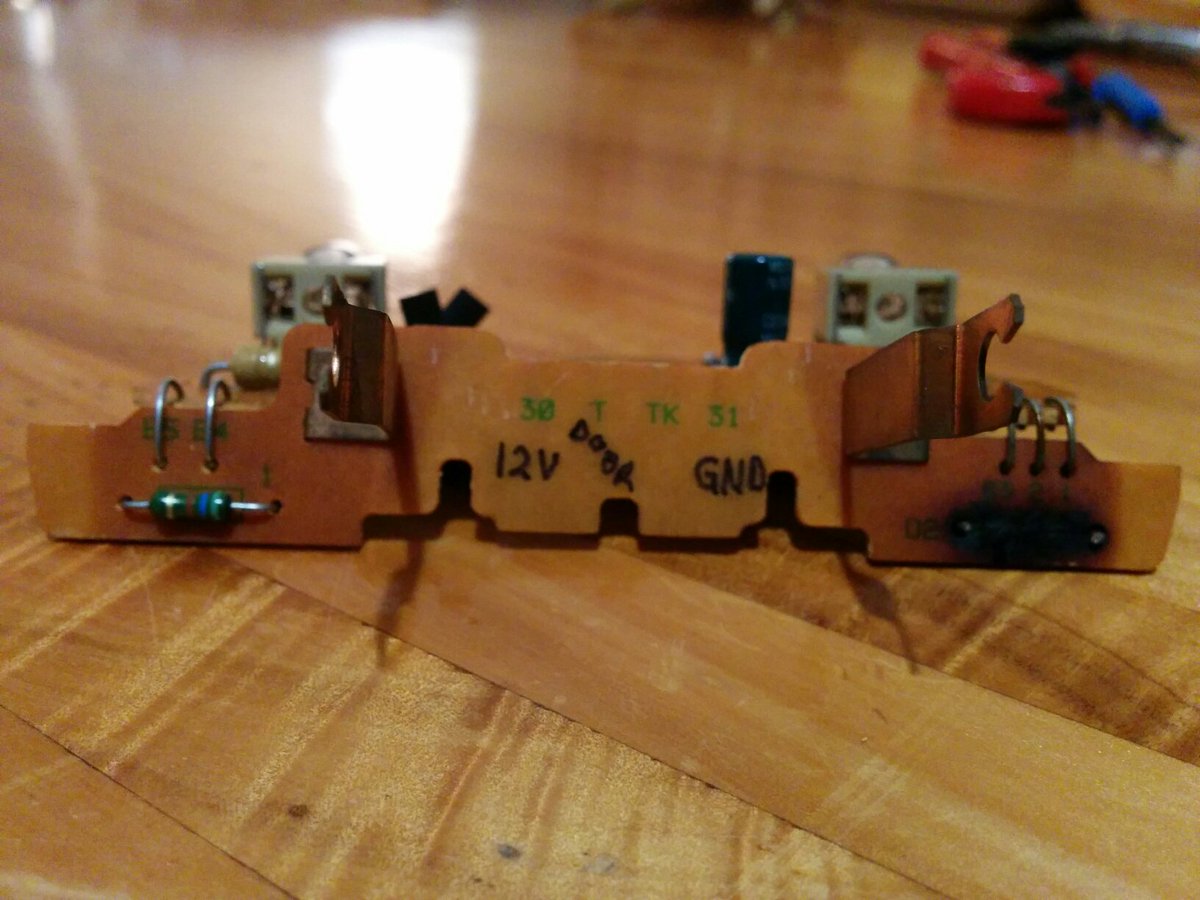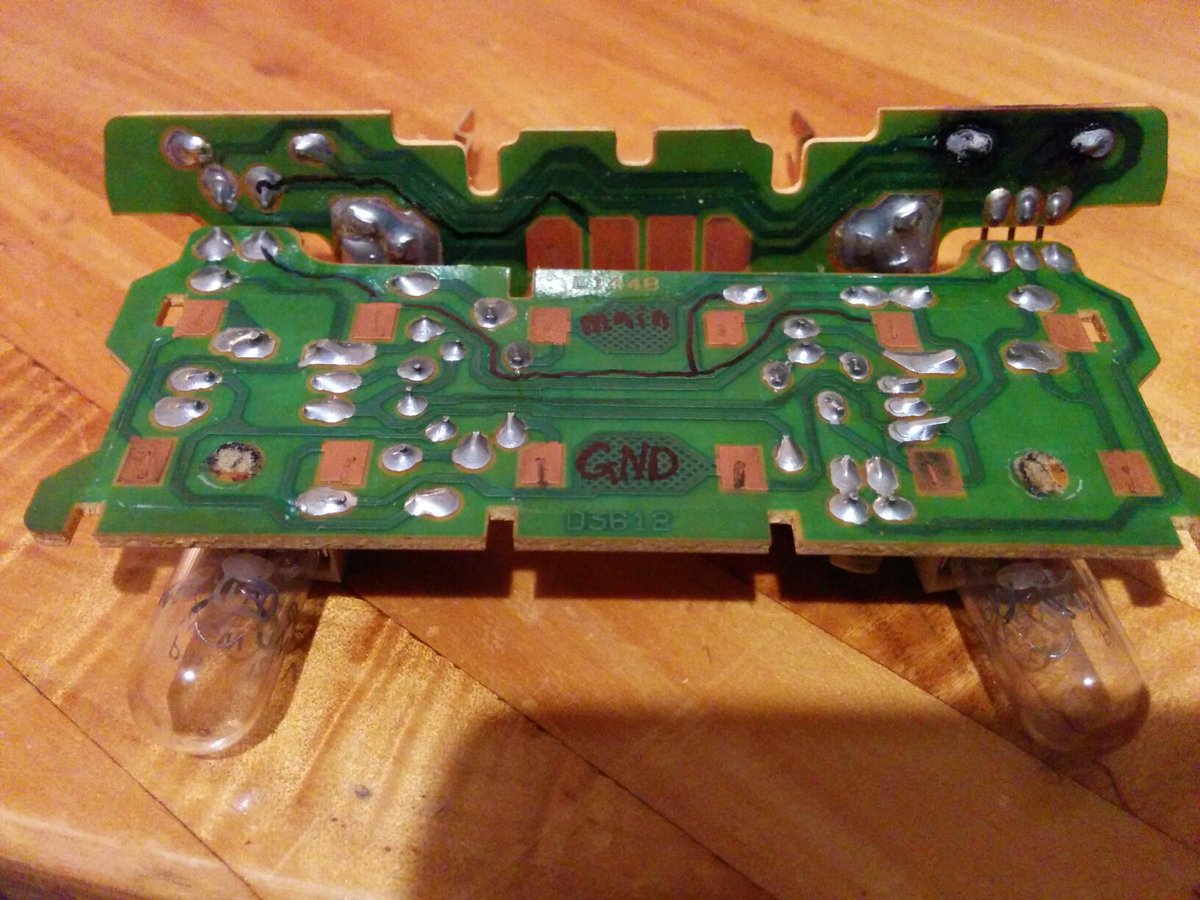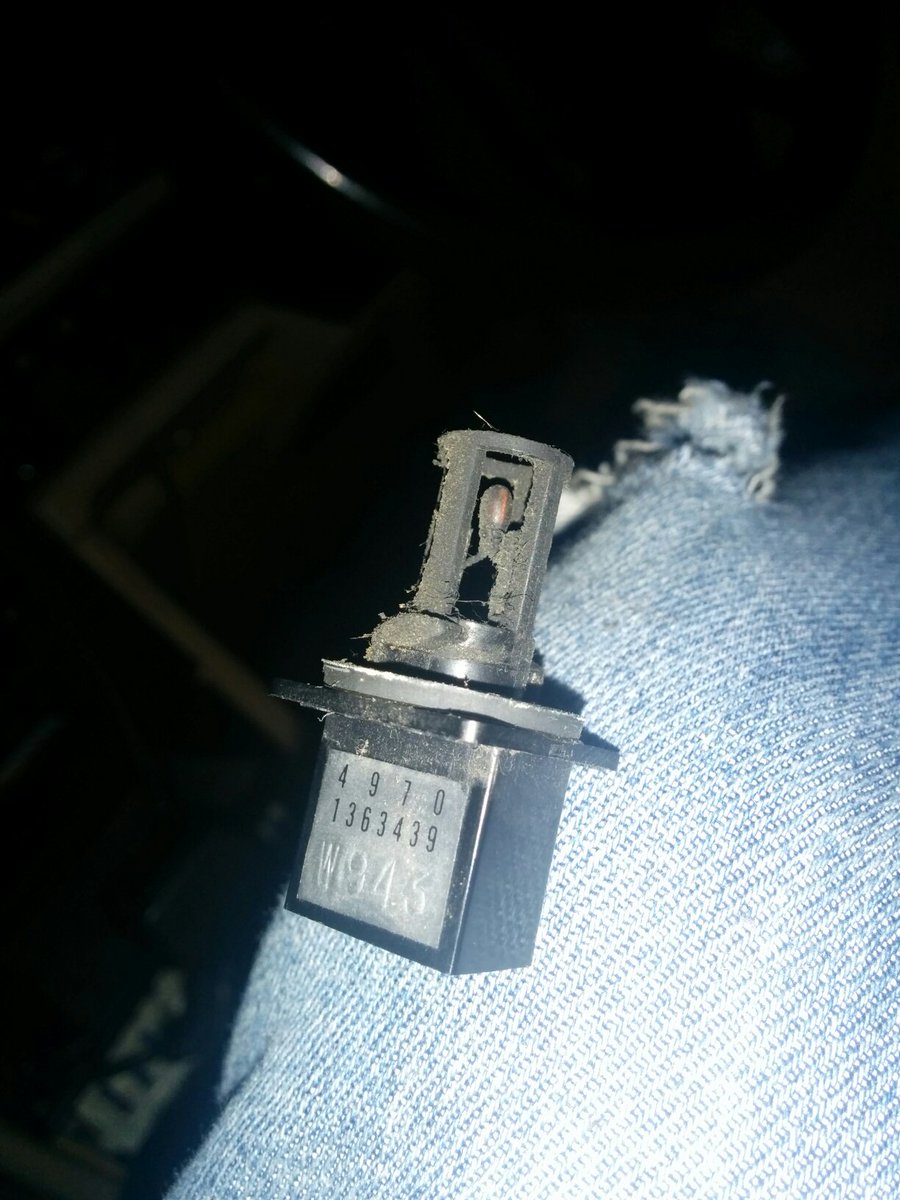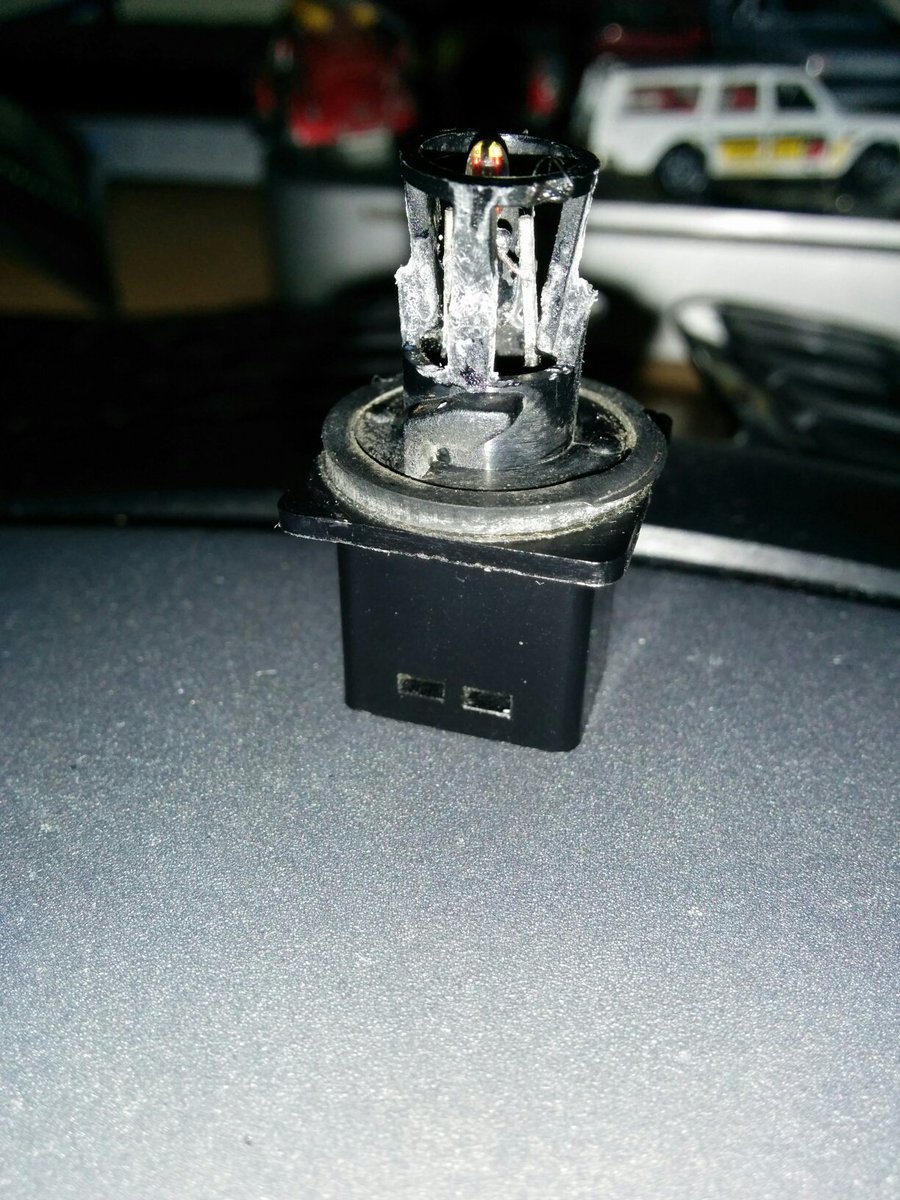FreeEMSFred
New member
- Joined
- Nov 2, 2009
- Location
- Kiwiland
Please 
If you know what its role in the circuit is, or have one that you don't mind popping out of your head liner to read the part number on, that'd be great! Thanks. Image of blown diode:
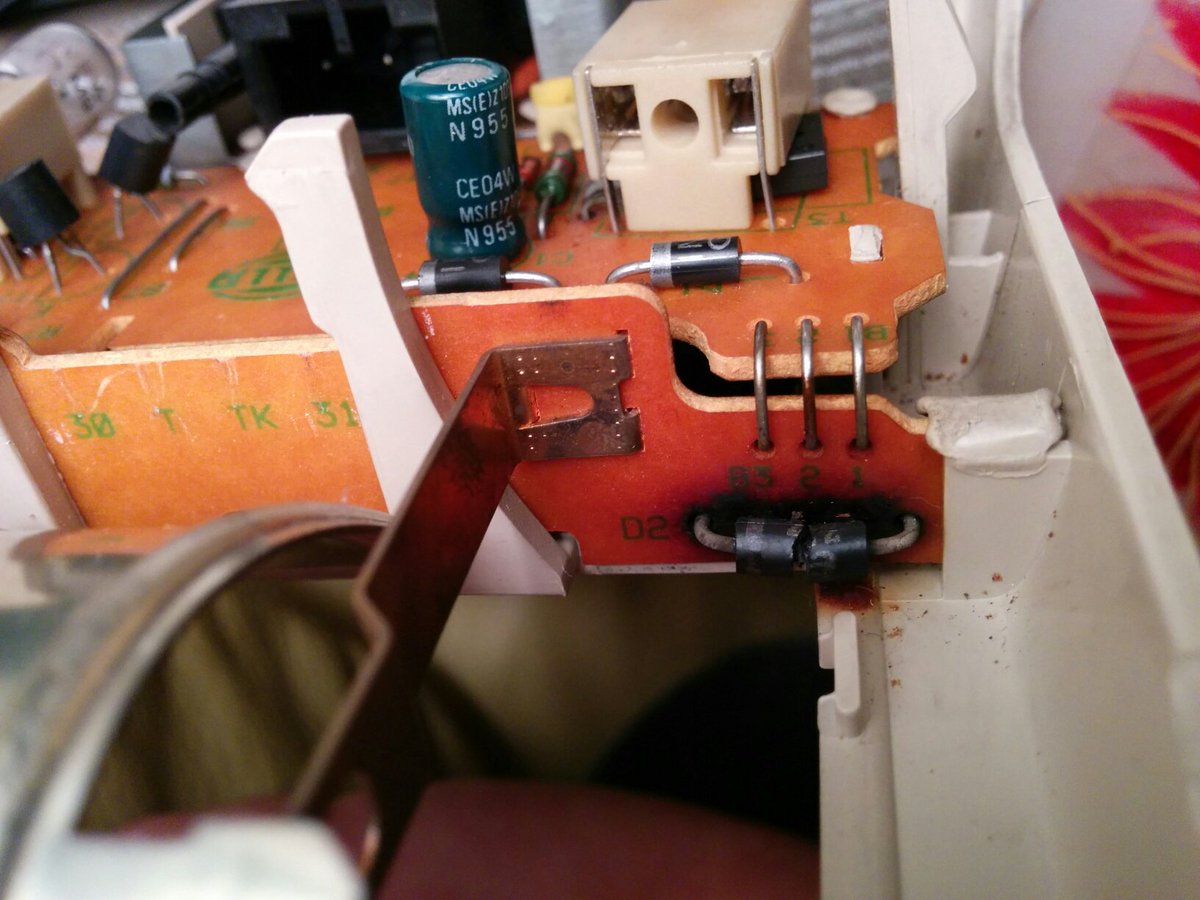
The trouble with unidentified diodes is that they can be several different types...
Can anyone explain what a circuit is doing in the dome light in the first place? I popped the light out of my caravan roof earlier, and it's very dull and empty, just bulbs! I'm guessing it's ECC related, though I have no idea what exactly. All info appreciated!
I'm guessing it's ECC related, though I have no idea what exactly. All info appreciated! 
While we're on the topic of ECC, my snow button is flashing and pressing it doesn't change that. The fan was fully seized (now replaced), and the power stage cooked (not yet replaced, but any day now...), but now having noticed this diode I'm wondering exactly what is wrong. I guess I should look up the fault code finding method and do just that. Links welcome, instructions to search like a n00b also welcome
Cheers!
If you know what its role in the circuit is, or have one that you don't mind popping out of your head liner to read the part number on, that'd be great! Thanks. Image of blown diode:

The trouble with unidentified diodes is that they can be several different types...
Can anyone explain what a circuit is doing in the dome light in the first place? I popped the light out of my caravan roof earlier, and it's very dull and empty, just bulbs!
While we're on the topic of ECC, my snow button is flashing and pressing it doesn't change that. The fan was fully seized (now replaced), and the power stage cooked (not yet replaced, but any day now...), but now having noticed this diode I'm wondering exactly what is wrong. I guess I should look up the fault code finding method and do just that. Links welcome, instructions to search like a n00b also welcome
Cheers!
Last edited:




